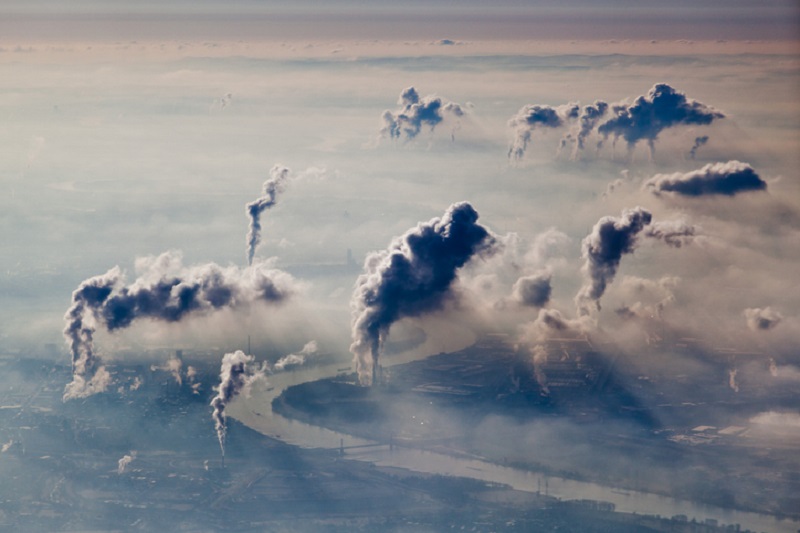It’s no surprise that air pollution is bad for our bodies, especially respiratory systems. But what about cancer? A recent study from researchers at the National Institutes of Health (NIH) is one of the largest to look at the link between outdoor air pollution levels and breast cancer. The results raise concern and demand attention to air quality.
Fine particulate-matter air pollution is a mixture of toxins in the air that are microscopic (equal or less than 2.5 microns in size). Also called ambient fine particulate matter, these toxins can be deeply inhaled into the lungs where they enter the blood stream and disperse through the body. A growing amount of research evidence suggests that fine particulate matter exposure is associated with an increased risk of breast cancer. One review of six European studies found an increased breast cancer risk of about 6 percent.
What the NIH Air Pollution Study Looked At
The NIH team used data on air pollution exposure for close to 200,000 women who were enrolled in the NIH-AARP Diet and Health Study, which began in 1995. They matched breast cancer diagnosis rates with levels of particulate-matter air pollution in six states (California, Florida, Pennsylvania, New Jersey, North Carolina, and Louisiana) and two cities, Atlanta and Detroit. This study is the first to include exposure risk starting 10-15 years before the study began. Other studies have only looked at exposure during the years of the study. This study also breaks down the risk by the type of breast cancer.
The average age of the women in the study was 62. During about 20 years of follow-up, there were 15,870 breast cancers diagnosed. A 10-microgram increase in particulate-matter air pollution was associated with an 8 percent increase in breast cancer incidence. Eight percent is a significant increase, and a risk factor shared by all women exposed to this type of air pollution. All the areas surveyed had an increase in breast cancer linked to particulate matter air pollution. The highest increase was for Atlanta at 22 percent. For the states, California had the lowest risk at 6 percent and North Carolina, the highest at 26 percent.
Pollution Is an Estrogen Disrupter
This study also broke down the cancers by estrogen receptor status. Most breast cancers are sensitive to the female hormone estrogen, called ER positive cancers. These tumors use estrogen to help them grow. The increase in breast cancer diagnosis was in ER positive cancers. This may explain how particulate matter air pollution increases breast cancer risk. Many of the toxins included in particulate matter are estrogen disruptors, meaning they may increase estrogen production in the body.
Particulate matter is a mixture of solid and liquid particles or droplets in the air from motor vehicle exhaust fumes, burning of oil or coal, industrial waste, or smoke from burning wood or vegetation. Airborne toxins that are estrogen disruptors include polybrominated diphenyl ethers, phthalates, and metals. Other possible carcinogenic particles can include organic compounds, ammonium, nitrate, ozone, sulfate, and others.
Breast cancer is the most common cancer in women, other than skin cancer. Known risk factors for breast cancer are family history (genes), reproductive history, alcohol intake, estrogen medications, and obesity. Reducing and avoiding air pollution may be a way women can reduce their risk of breast cancer. The U.S. Environmental Protection Agency provides a website called Air Now (AirNow.gov) where you can enter your zip code and find out about air quality and the level of particulate-matter air pollution in your area.
Source: “Ambient Fine Particulate Matter and Breast Cancer Incidence in a Large Prospective US Cohort,” by researchers at the National Institute of Environmental Health Sciences, published in the Journal of the National Cancer Institute.


